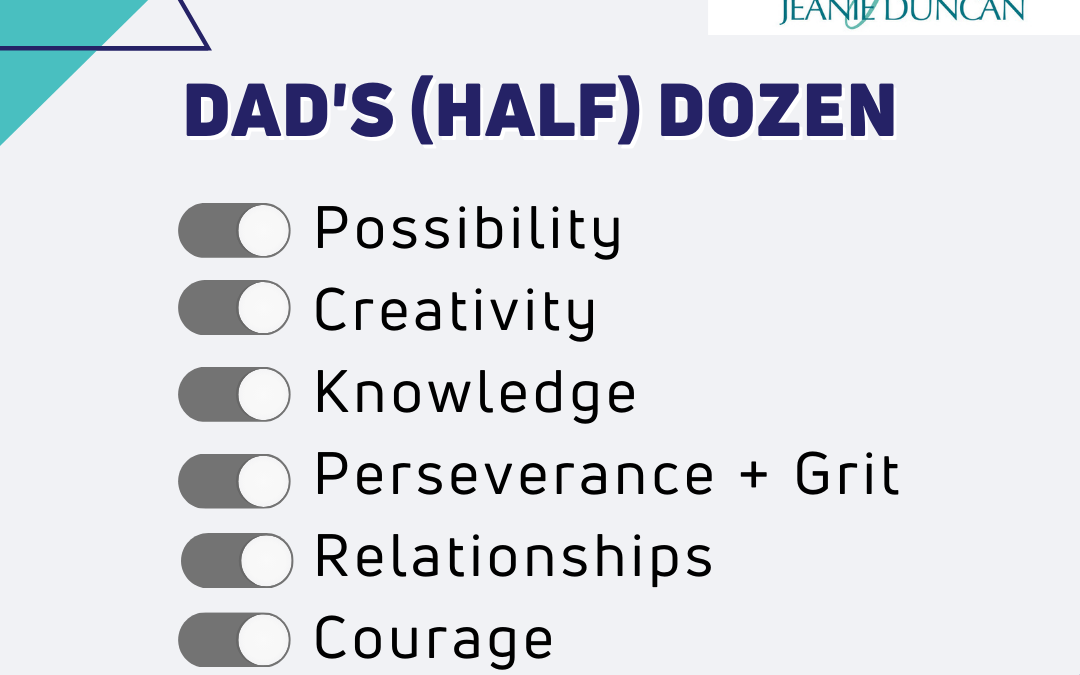
Jun 22, 2021 | Entrepreneurship, Gratitude, Leadership

My dad was a gentle giant – not physically, but figuratively speaking in his heart, spirit, and all-around “way.” There was nothing he couldn’t do. I lost him to Alzheimer’s a couple of years ago. It’s such a dreadful disease – slowly chipping away at your loved one until they’re only a shell of who they once were. You’re stuck grieving your loved one while they’re still living. In his slow ten-year fade, we found joy in going on long walks where we’d talk about all the things. I’d seek his business advice, and he would teach me through his stories.
My mom and dad were business owners – both farming and a retail jewelry business. They had a jewelry store in the city, and later moved it into our home, where dad designed and created custom fine jewelry, while mom took care of customers and the finances. I still smile today thinking about how these two enterprises couldn’t be more different from one another, yet they so perfectly reflected who he was: artist, builder, nature lover, enterpriser. He’d go from wrangling cows and horses by day to delivering his beautiful and intricate jewelry designs for customers in the evenings.
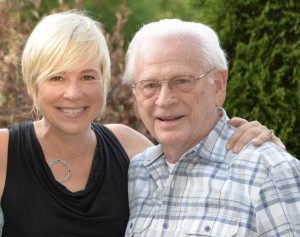 I was the youngest of three kids, and we all worked in the businesses, from chores of taking care of the farm animals and the property to stringing pearl necklaces and sorting gemstones. Like most kids, I didn’t realize it then, but I was absorbing so many lessons and shaping qualities that would later serve me well.
I was the youngest of three kids, and we all worked in the businesses, from chores of taking care of the farm animals and the property to stringing pearl necklaces and sorting gemstones. Like most kids, I didn’t realize it then, but I was absorbing so many lessons and shaping qualities that would later serve me well.
It’s in starting and running my own business that I think of my dad most today and feel his influence. He served as a huge impetus. I could write so much about him, but I’ll stick with my “Dad’s (half) Dozen” for now. It’s these qualities that made him such a beautiful human being, encouraging mentor, and humble, effective leader…for which I’m so grateful.
Dad’s (half) Dozen
- Possibility: The quote, “If you can dream it, you can do it” is attributed to Walt Disney, but it could just as easily be my dad. The man knew no limitations and believed that anything was possible. He started with nothing (in fact less than nothing) and built businesses, made an abundant life for his family, and taught us that we could do the same.
- Creativity: I so appreciate and value the creative human being my dad was – jewelry designer, landscape architect, master gardener, home and barn builder, and more. If he saw something he wanted or something he desired for his family, he went after it, most always doing the design and work himself.
- Knowledge: Building on his creativity and infinite resourcefulness, if there was something he wanted and didn’t know how to do it, he learned how and made it happen. It seemed like there was nothing he couldn’t do. I remember the time he put in a lake on our farm. A natural stream ran through our property, and he’d always wanted a lake. So, he drew up the plans for it, bought a backhoe and bulldozer, built it, then sold the equipment for more than he paid for it. And best of all, he stocked it with bass, brim, and catfish which made for hours of fun fishing from our paddleboat. My dad…
- Perseverance and Grit: Dad was ambitious and enterprising and knew that success came with pure hard (and smart) work and the ability to stick with it through all the ups and downs. I couple these two because it makes me think of Angela Duckworth’s book, “Grit: the power of passion and perseverance.” It describes my dad to a “T.” In it, she defines the key characteristics of courage, conscientiousness, long-term goals and endurance, resilience, and excellence. Ok…if I could only have one of dad’s traits, it might be this one!
- Relationships: In life and work, my parents were all about relationships. “We do business with those who do business with us,” they would often say. They built a great following of customers with this mantra and generously cultivated loyalty. On our farm, we had a small but prolific orchard of pecan, apple, and peach trees, a vegetable garden, and several dozen rose bushes. Every week, dad would harvest whatever was in season, arrange vases and gift bags, and make their “Friday rounds” delivering gifts to clients, customers, and vendors. He was famous for it!
- Courage: One of my favorite quotes comes from John Wayne, who was adored by my father, “Courage is being scared to death and saddling up anyway.” This should have been on display in dad’s store; I remember him most for this kind of boldness. I’m sure he had plenty of doubts and was even terrified at times, but he did all the work, he trusted, and took the leap. And without ever saying a word, he taught me how to do the same.
 Hi, I’m Jeanie Duncan. I work with individuals and organizations as a transformation partner to help them unlock their Truth, discover authentic value, and create meaningful impact in the world. I believe when we are truly aligned with our purpose, we can live and perform at our highest potential. With over 25 years of experience as an executive, CEO, consultant, and coach, I offer strategic, knowledgeable, and experienced guidance for those who are ready to take the courageous leap toward true transformation.
Hi, I’m Jeanie Duncan. I work with individuals and organizations as a transformation partner to help them unlock their Truth, discover authentic value, and create meaningful impact in the world. I believe when we are truly aligned with our purpose, we can live and perform at our highest potential. With over 25 years of experience as an executive, CEO, consultant, and coach, I offer strategic, knowledgeable, and experienced guidance for those who are ready to take the courageous leap toward true transformation.

Feb 17, 2021 | Authenticity, Courage, Intention, Leadership
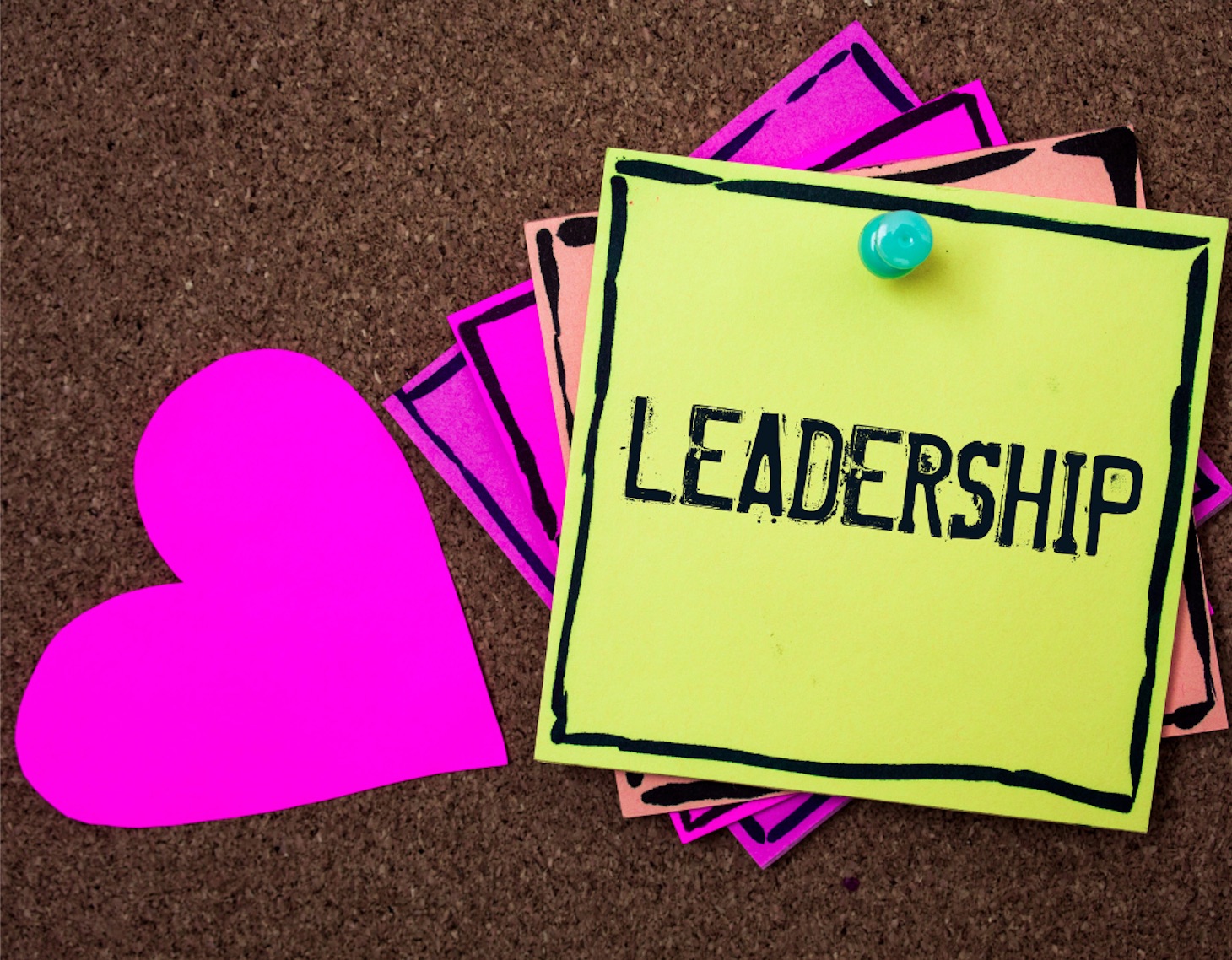 A few weeks ago, I watched Biden and Harris take office and was especially struck by a comment in Biden’s inaugural address, “Take a measure of me and my heart. If you still disagree, so be it. That’s democracy. That’s America. The right to dissent peaceably within the guardrails of our republic is perhaps our nation’s greatest strength.”
A few weeks ago, I watched Biden and Harris take office and was especially struck by a comment in Biden’s inaugural address, “Take a measure of me and my heart. If you still disagree, so be it. That’s democracy. That’s America. The right to dissent peaceably within the guardrails of our republic is perhaps our nation’s greatest strength.”
“Take a measure of me and my heart.”
His words stunned me. First because it feels so good to have leadership again. And second, because it feels so good to have leadership with heart. I believe we do.
Our world needs more leadership with heart. It’s what I’ve come to call “wholehearted leadership,” to borrow one of Brene Brown’s coined phrases. It was in reading her book, “Gifts of Imperfection,” that I first heard that phrase ten years ago. I strive to live it in my work and life. And I look for it in others. It’s so deeply satisfying and fulfilling to see it in action…
- Cultivate authenticity and let go of what other people think
- Cultivate self-compassion and let go of perfectionism
- Cultivate our resilient spirit and let go of numbing and powerlessness
- Cultivate gratitude and joy and let go of scarcity and fear of the dark
- Cultivate intuition and faith and let go of the need for certainty
- Cultivate creativity and let go of comparison
- Cultivate play and rest and let go of exhaustion as a status symbol and productivity as self-worth
- Cultivate calm and stillness and let go of anxiety as a lifestyle
- Cultivate meaningful work and let go of self-doubt and “supposed to”
- Cultivate laughter, song, and dance and let go of “cool” and always in control
– Brene Brown’s 10 Guideposts for Wholehearted Living
These affirmations hang in my office as a reminder of how I want to love, live, and lead in the world. It’s about showing up with vulnerability – owning who you are and letting others see you. It only took me a few decades to learn this…and it’s a forever journey. It requires great intentionality, practice, and loads of courage…Every. Single. Day.
I remember the first time I learned about vulnerability as a leader. I was 30 years old and in a leadership development program where I had been paired with an executive coach. Part of her guidance encouraged me to become more vulnerable as a leader. I had an instant, visceral reaction to her words. I cringed, remembering my mom and what she taught me as a young girl. I told my coach, “My mama did NOT teach me to be vulnerable!”
I imagined sitting across from my mom and sharing with her what I learned at leadership school. I could see her plain as day…sitting across from me, arms tightly crossed, and giving me a furrowed, disapproving stare. Growing up in my home, any thoughts of vulnerability were considered weak, and I was taught to show anything but that:
Be strong!
Never let ‘em see you sweat (or cry)
Hold your cards close to the vest
I don’t think either of my parents intended this, but what they taught me around vulnerability – to guard against it – caused me to show up as a leader rigid, aloof, and less approachable. It took me nearly two decades to undo.
I see this same resolve in leaders I coach today, especially female leaders. To get ahead, we develop armor…a shell to protect us, we put forth an image of steel, as in “I have this under control” and “I’ve got it all together.” Inside we may be quaking, but the external world will never know it. We take it own, carry the load, and ‘grin and bear it.’ Years and decades pass. We become someone we don’t know anymore….or worse, someone we don’t even like.
“Take a measure of me and my heart,” Biden says.
This is a reminder to us all to put down our armor, come out from behind our shields, open our hearts and let others see our humanity.
 Hi, I’m Jeanie Duncan. I work with individuals and organizations as a transformation partner to help them unlock their Truth, discover authentic value, and create meaningful impact in the world. I believe when we are truly aligned with our purpose, we can live and perform at our highest potential. With over 25 years of experience as an executive, CEO, consultant, coach, and writer, I offer strategic, knowledgeable, and experienced guidance for those who are ready to take the courageous leap toward true transformation.
Hi, I’m Jeanie Duncan. I work with individuals and organizations as a transformation partner to help them unlock their Truth, discover authentic value, and create meaningful impact in the world. I believe when we are truly aligned with our purpose, we can live and perform at our highest potential. With over 25 years of experience as an executive, CEO, consultant, coach, and writer, I offer strategic, knowledgeable, and experienced guidance for those who are ready to take the courageous leap toward true transformation.

Nov 23, 2020 | Action, Authenticity, Courage, Freedom, Intention, Women
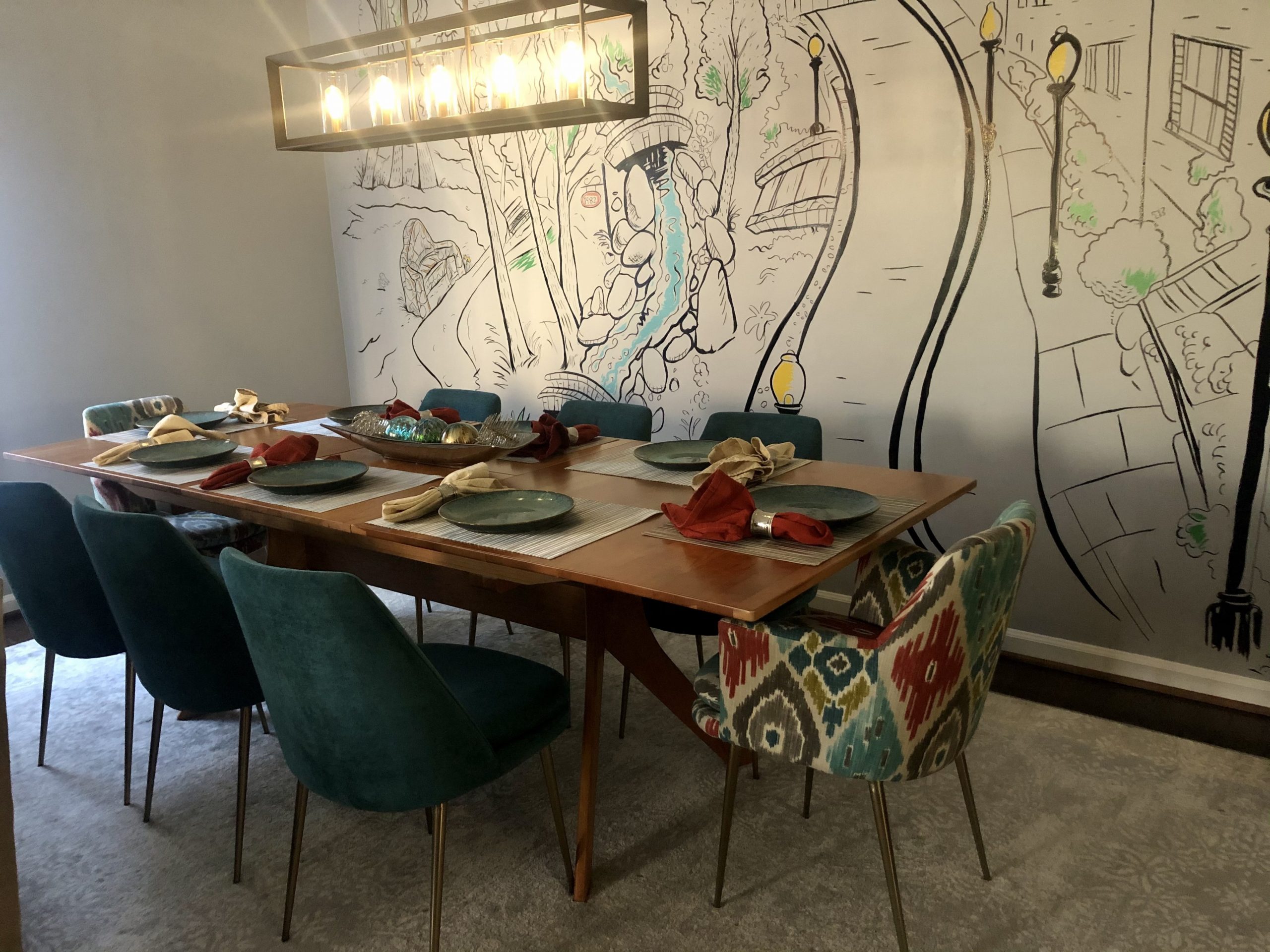 I got married a few weeks ago on October 10. As I fell asleep the night before, I meditated on an intention to be fully present on our wedding day. You know how weddings go – they’re chock full of endless tasks and details and a flurry of activity. I knew this was the reality and I wanted to let go and be fully present with Lyn, my wife-to-be, and our beautiful, precious ceremony.
I got married a few weeks ago on October 10. As I fell asleep the night before, I meditated on an intention to be fully present on our wedding day. You know how weddings go – they’re chock full of endless tasks and details and a flurry of activity. I knew this was the reality and I wanted to let go and be fully present with Lyn, my wife-to-be, and our beautiful, precious ceremony.
As I drifted off, I wondered what it would feel like tomorrow when the day I had longed for finally arrived. I had imagined it a thousand times, playing the scenes over and over in my mind.
As I awoke that morning, what I hadn’t considered was this feeling that now washed over me – the deepest sense of gratitude. “I get to do this,” I thought. Just six years ago it wouldn’t have been possible to marry Lyn, to bond our love and commitment in the formal union of marriage.
I sat reflecting on those who came before me – those who advocated for this right of equality and were persecuted, prosecuted, and even gave their lives for it. The very freedoms and rights they fought for; many never were able to live it themselves. And here I sit, in my den, cozy under a blanket, sipping my coffee on my wedding day…I get to do this.
Audre Lorde, Marsha P. Johnson, Sylvia Rivera, Billie Jean King, Harvey Milk, Jack Baker, Michael McConnell, Edith Windsor, Jim Obergefell, Mary Bonauto, Justice Ruth Bader Ginsburg, Justice Anthony Kennedy, Evan Wolfson, Evelyn and Walter Haas, Jr., and so many, many more.
I carried their spirit, perseverance, and legacy with me through the day, sustained in gratitude, committing to do far more than simply hold this feeling – to persist as they did, take action to ensure common humanity, freedoms, and rights for LGBTQ people. There is so much work that remains to be done.
Today, heading into Thanksgiving week 2020, where our pandemic world is turned upside down and inside out, Lyn and I have decided how we’ll celebrate the holiday this year. In the absence of not being able to gather with family and friends as we traditionally do, we’re preparing our dining table with place settings reserved for those whom we want to honor, celebrate, and give thanks. The seats will be taken, not only by champions who fought for LGBTQ freedoms and rights, but also by those who led the way for women’s rights, civil rights, and for democracy, equality, and inclusion.
It will be a Thanksgiving like none other…maybe one that’s here to stay.
 Hi, I’m Jeanie Duncan. I work with individuals and organizations as a transformation partner to help them unlock their Truth, discover authentic value, and create meaningful impact in the world. I believe when we are truly aligned with our purpose, we can live and perform at our highest potential. With over 25 years of experience as an executive, CEO, consultant, coach, and writer, I offer strategic, knowledgeable, and experienced guidance for those who are ready to take the courageous leap toward true transformation.
Hi, I’m Jeanie Duncan. I work with individuals and organizations as a transformation partner to help them unlock their Truth, discover authentic value, and create meaningful impact in the world. I believe when we are truly aligned with our purpose, we can live and perform at our highest potential. With over 25 years of experience as an executive, CEO, consultant, coach, and writer, I offer strategic, knowledgeable, and experienced guidance for those who are ready to take the courageous leap toward true transformation.

Mar 11, 2014 | Leadership, Transition & Change
In my latest blog post (“Leading with Compassion and Authenticity,” February 18) I wrote about a favorite leadership book, “Leading with Authenticity in Times of Transition” by Kerry Bunker and Michael Wakefield. As a continuation of that post, I want to share the specific leadership competencies highlighted in the text that are critical for leaders navigating the complex challenges of transition. These competencies are presented as pairs (representing both the structural and people side) and graphically displayed as a wheel to demonstrate their interrelatedness and the need for balance.

Bunker and Wakefield use the image of a bicycle wheel to describe the leadership competencies, reflecting that each spoke needs to be tightened or loosened to the right tension. Otherwise, there will be strain on the other spokes, pulling the wheel out of alignment. Six spokes represent the structural competencies, and six the people-related competencies. If a leader devotes an overabundance of energy to any one competency, s/he runs the risk of skewing the opposite and pushing the wheel out of true, creating undue strain on the trust needed to lead effectively. The key is to find appropriate ways to work with both sides that are authentic to the leader and avoid swinging dramatically from one side to the other.
I find this resource very helpful in conceptualizing the core elements important to navigating change and transition as well as the need for balance among them. Most leaders are quite skilled at dealing with change and solving problems from the structural side of leadership – the plan, rationale, data, and measurements. Posing a much greater challenge for most is connecting to the people side of change – the emotions, discomfort, letting go, and rebuilding. Central to it all is trust, without which success in transition cannot exist.
Consider this example: A nonprofit arts organization had recently undergone a strategic planning process that included extensive community input data gathering. This led to a reshaping of priorities and key areas of focus for the organization, which re-defined its core lines of business. As a result, the organization ceased two primary areas of its operation. From this redefining, the organization aligned its leadership, resources, business strategy, and culture to support this new model. Among other things, the action led to a redesign and reduction in both board and staff leadership. By any measure, this was substantial change to this agency.
A true test for the organization was how it dealt with the more emotional side of the human elements of transition. While they handled the mechanics of the change well: strategy, planning, gathering community input, and defining core areas of focus and lines of business, the organization fell short in leading the more human dynamics of the transition: allowing for time and space for emotional processing, feeling discomfort, dealing with resistance, and appreciating differences in how people cope with change and taking those perspectives into account.
I see this frequently with the organizations and executives with whom I work. Strategic planning processes like these take a lot of time, effort, and energy. When a plan is done, it’s easy to feel like you’ve reached the finish line. It’s much harder to realize you’re only half or two-thirds finished, and that a critical component of your work is yet to be done – addressing the more sensitive people issues and empowering a team to embrace the change and help shape and lead the future.
As Bunker and Wakefield note, “change initiatives often break down because people stall somewhere during the transition.” Ignoring or falling short in this area will greatly impact the overall success of a transition. With the organization example above, the ‘less than ideal’ handling of the human elements created a turbulence that was felt for years after. These missteps are painful to recover from.
A highly skilled leader lives through the process of transition with others in a genuine and authentic way. They help their people flex and adapt, and foster their ability to contribute in new and meaningful ways. Here’s an overview of the twelve competencies:
Catalyzing Change versus Coping with Transition
Catalyzing Change is championing an initiative or significant change. A leader who is skilled at catalyzing change consistently promotes the cause, encourages others to get on board, and reinforces those who already are. Such leaders are highly driven and eager to get others engaged in new initiatives.
Coping with Transition involves recognizing and addressing the personal and emotional elements of change. Leaders who are able to cope with transition are in touch with their personal reactions to change and transition and make use of that emotional information. They lead by example.
Sense of Urgency versus Realistic Patience
Sense of Urgency involves taking action quickly when necessary to keep things rolling. Leaders who have a strong sense of urgency move fast on issues and accelerate the pace for everyone. They value action and know how to get things done.
Realistic Patience involves knowing when and how to slow the pace to allow time and space for people to cope and adapt. Leaders who display realistic patience appreciate the fact that people learn and deal with change differently and do not judge them based on their own styles, preferences, or capabilities.
Being Tough versus Being Empathetic
Being Tough denotes the ability to make difficult decisions about issues and people with little hesitation or second-guessing. Leaders who are comfortable and secure with themselves can display toughness; they’re not afraid to take a stand in the face of public opinion or strong resistance.
Being Empathetic requires taking others’ perspectives into account when making decisions and taking action. Empathetic leaders try to put themselves in other people’s shoes; they’re able to enhance their own perspectives by considering the views of others.
Optimism versus Realism and Openness
Optimism is the ability to see the positive potential of any challenge. Leaders who exude optimism can communicate and convey that optimism to others.
The combination of Realism and Openness denotes a grounded perspective and a willingness to be candid. Leaders who practice this competency are clear and honest about assessing a situation and the prospects for the future. They are candid in communicating what is known and not known. When managers exhibit realism and openness, they speak the truth, don’t sugarcoat the facts, and are willing to admit personal mistakes and foibles.
Self-Reliance versus Trusting Others
Self-Reliance involves a willingness to take a lead role and even to do something yourself when necessary. Self-reliant leaders have a great deal of confidence in their skills and abilities and are willing to step up and tackle new challenges.
Trusting Others means being comfortable with allowing others to do their part of a task or project. A leader who trusts others is open to input and support from colleagues and friends. Such leaders respect others and demonstrate trust through a willingness to be vulnerable with them.
Capitalizing on Strengths versus Going Against the Grain
Capitalizing on Strengths entails knowing your strengths and attributes, and confidently applying them to tackle new situations and circumstances. A leader who knows how to capitalize on strengths trusts the abilities that have generated success, rewards, recognition, compliments, and promotions in the past and uses them in new situations.
Going Against the Grain entails a willingness to learn and try new things, even when the process is hard or painful. Leaders who can go against the grain are willing to get out of their comfort zones. They are willing to tolerate discomfort if it leads to learning.
I don’t know about you, but when I read these competencies, I see that there are some inherent conflicts between them. In the face of change and turmoil, it’s interesting that people look for those who are simultaneously strong and vulnerable, heroic yet open, demanding while compassionate. Leading well often feels like an impossible balancing act. It can be exhausting!
For me, I think it’s most about knowing yourself as a leader. Knowing what is genuinely, authentically you and applying that consistently and well over time. And when you have those critical learning moments, take the new discoveries and further polish and refine your leadership skills.

photo credit: left-hand via photopin cc
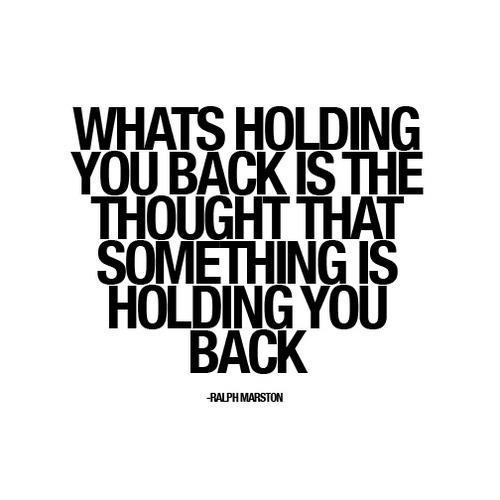
Apr 28, 2013 | Intention

A Raven Reflection on a shared blog post from empowerlounge.com April 25, 2013
Do you have an inner voice full of negativity? Quietly nattering at you at every turn, asking you what business you have thinking you can make this successful? That you aren’t smart enough, gorgeous enough or hip enough to accomplish your goals? Studies have proven that it IS possible to turn that voice around, or even off. A mirror can help. Stand in front of a mirror and look yourself in the eye. Pick a phrase that is a direct hit to your inner critic. For example “I am enough” or “I am a successful business woman!” Stick these positive affirmations on your mirror so you see them daily!
Include in your daily routine:
- Knocking 3 things off your priority list to build confidence and create momentum
- Reading inspirational quotes and magazines (and Empower Lounge!)
- Calling or gathering with positive, supportive peers
- Getting outside, it works like magic every time.
- Making yourself comfortable with failure! It’s the one thing we all have in common, happens to the best of us and we’re stronger and smarter because of it!
~ ~ ~ ~
This blog post really hit home for me. Can you relate?
Just earlier this week, I had a session with my coach. I was grumbling about a task that was going to be really difficult and time consuming when she jumped in “Really? Who says?”
A puzzled look came over my face and I replied, “Well everyone says it is.” She countered “What if it’s not? What perspective would you like to have? What if it’s easy? What if it’s fun?”
That simple question “What perspective would I like to have?” stopped me in my tracks. I hadn’t even done this task before and already I was approaching it as hard, difficult, and time consuming. How excited do you think I was to get started? You guessed it.
Now, after a few days of marinating on that powerful thought, I’ve approached my task with a new and positive attitude, come up with fresh ideas, and experienced forward movement in getting started on this new work. I’m reminded that I am always in choice…for how I respond, react, and approach things in my every day.
Our thoughts create our reality. How are you shaping your thoughts today?
Jeanie is President of Raven Consulting Group, a business she founded that focuses on organizational change and leadership development in the nonprofit sector. She is a senior consultant for TransitionGuides, a national firm working with nonprofit clients to lead efforts in sustainability and succession planning, executive transition and search. Additionally, Jeanie serves as adjunct faculty for the Center for Creative Leadership, a top-ranked, global provider of executive leadership education.


 I was the youngest of three kids, and we all worked in the businesses, from chores of taking care of the farm animals and the property to stringing pearl necklaces and sorting gemstones. Like most kids, I didn’t realize it then, but I was absorbing so many lessons and shaping qualities that would later serve me well.
I was the youngest of three kids, and we all worked in the businesses, from chores of taking care of the farm animals and the property to stringing pearl necklaces and sorting gemstones. Like most kids, I didn’t realize it then, but I was absorbing so many lessons and shaping qualities that would later serve me well. Hi, I’m Jeanie Duncan. I work with individuals and organizations as a transformation partner to help them unlock their Truth, discover authentic value, and create meaningful impact in the world. I believe when we are truly aligned with our purpose, we can live and perform at our highest potential. With over 25 years of experience as an executive, CEO, consultant, and coach, I offer strategic, knowledgeable, and experienced guidance for those who are ready to take the courageous leap toward true transformation.
Hi, I’m Jeanie Duncan. I work with individuals and organizations as a transformation partner to help them unlock their Truth, discover authentic value, and create meaningful impact in the world. I believe when we are truly aligned with our purpose, we can live and perform at our highest potential. With over 25 years of experience as an executive, CEO, consultant, and coach, I offer strategic, knowledgeable, and experienced guidance for those who are ready to take the courageous leap toward true transformation. 

 A few weeks ago, I watched Biden and Harris take office and was especially struck by a comment in
A few weeks ago, I watched Biden and Harris take office and was especially struck by a comment in  Hi, I’m Jeanie Duncan. I work with individuals and organizations as a transformation partner to help them unlock their Truth, discover authentic value, and create meaningful impact in the world. I believe when we are truly aligned with our purpose, we can live and perform at our highest potential. With over 25 years of experience as an executive, CEO, consultant, coach, and writer, I offer strategic, knowledgeable, and experienced guidance for those who are ready to take the courageous leap toward true transformation.
Hi, I’m Jeanie Duncan. I work with individuals and organizations as a transformation partner to help them unlock their Truth, discover authentic value, and create meaningful impact in the world. I believe when we are truly aligned with our purpose, we can live and perform at our highest potential. With over 25 years of experience as an executive, CEO, consultant, coach, and writer, I offer strategic, knowledgeable, and experienced guidance for those who are ready to take the courageous leap toward true transformation. 
 I got married a few weeks ago on October 10. As I fell asleep the night before, I meditated on an intention to be fully present on our wedding day. You know how weddings go – they’re chock full of endless tasks and details and a flurry of activity. I knew this was the reality and I wanted to let go and be fully present with Lyn, my wife-to-be, and our beautiful, precious ceremony.
I got married a few weeks ago on October 10. As I fell asleep the night before, I meditated on an intention to be fully present on our wedding day. You know how weddings go – they’re chock full of endless tasks and details and a flurry of activity. I knew this was the reality and I wanted to let go and be fully present with Lyn, my wife-to-be, and our beautiful, precious ceremony. Hi, I’m Jeanie Duncan. I work with individuals and organizations as a transformation partner to help them unlock their Truth, discover authentic value, and create meaningful impact in the world. I believe when we are truly aligned with our purpose, we can live and perform at our highest potential. With over 25 years of experience as an executive, CEO, consultant, coach, and writer, I offer strategic, knowledgeable, and experienced guidance for those who are ready to take the courageous leap toward true transformation.
Hi, I’m Jeanie Duncan. I work with individuals and organizations as a transformation partner to help them unlock their Truth, discover authentic value, and create meaningful impact in the world. I believe when we are truly aligned with our purpose, we can live and perform at our highest potential. With over 25 years of experience as an executive, CEO, consultant, coach, and writer, I offer strategic, knowledgeable, and experienced guidance for those who are ready to take the courageous leap toward true transformation.

